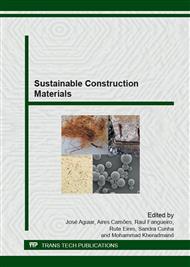p.3
p.14
p.22
p.33
p.46
p.54
p.62
p.72
Cool Façades - Thermal Performance Assessment Using Infrared Thermography
Abstract:
High reflective paints (cool paints) can reduce solar heat gains, improving thermal comfort and energy efficiency in buildings in summer period. To evaluate the thermal performance of different reflective paints applied in façades (over ETICS like solution) a research study is being developed at LNEC using full-scale test cells built in LNEC’s campus.For this purpose, non-destructive infrared thermography method is being used. This method allows knowing the temperature distribution on façades by measuring infrared radiation emitted from its surfaces. Thermocouples placed on wall outside surfaces support thermographic diagnosis.Optical properties of cool paints (reflectance and emittance) used in this research study were achieved by additional laboratory tests.Comparative analysis between thermal performance of a white cool paint and a white conventional paint is presented in this paper. This research study also shows the potential of infrared thermography in the assessment of thermal performance of cool paints.
Info:
Periodical:
Pages:
14-21
Citation:
Online since:
December 2014
Authors:
Keywords:
Price:
Сopyright:
© 2015 Trans Tech Publications Ltd. All Rights Reserved
Share:
Citation:


